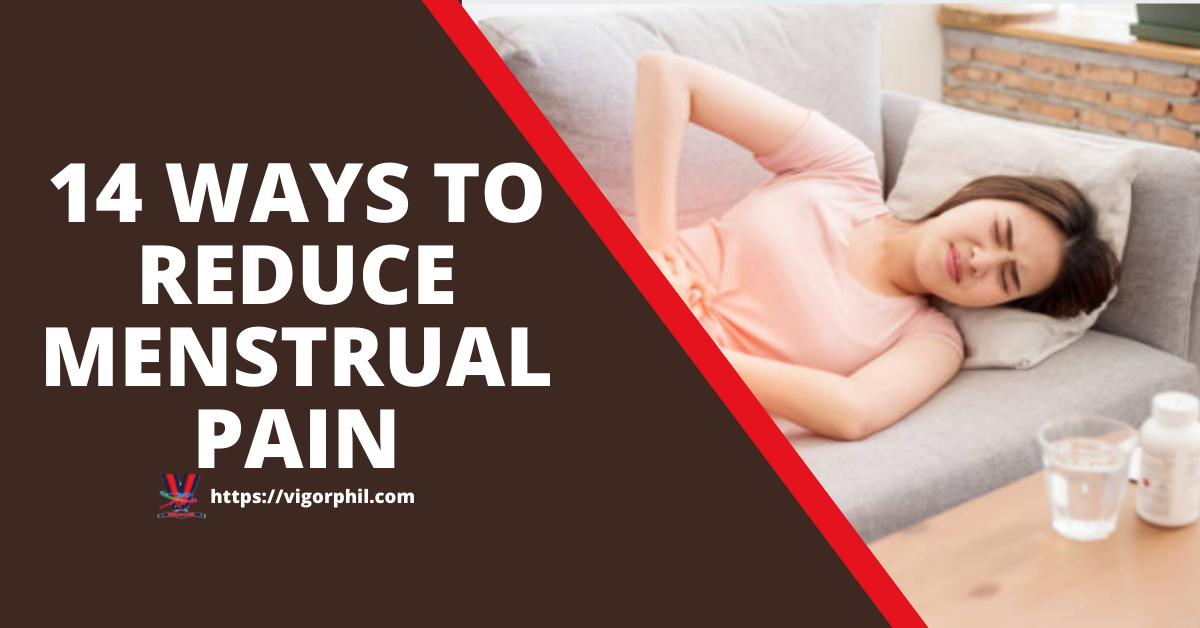Stomach ulcers, also known as peptic ulcers, are open sores that develop on the lining of the stomach or small intestine. These ulcers can be painful and uncomfortable, and may even lead to more serious health issues if left untreated. While medication can be effective in treating stomach ulcers, several home remedies can help alleviate pain.
This article will explore some of the best home remedies for stomach ulcer pain, including lifestyle changes, dietary changes, herbal remedies, and stress management techniques. By incorporating these remedies into your routine, you may be able to reduce your stomach ulcer pain and improve your overall quality of life.
WHAT IS ULCER
Stomach ulcers, which are also known as gastric ulcers, are painful sores in the stomach lining. An ulcer can be extremely discomforting resulting in a nightmare for its patient. This article (home remedies for stomach ulcer pain) will provide a permanent solution to any ulcer if judiciously followed.
Gastric and duodenal ulcers are the two types of Peptic ulcers. If a person happens to have duodenal and gastric ulcers at the same time, the individual is said to have a gastroduodenal ulcer.
What Are The Signs And Symptoms of Ulcer and H. Pylori bacteria?
There are many symptoms associated with ulcers. The symptom severity is dependent on the severity of the ulcer.
The most common symptom is a burning sensation or pain in the middle of the abdomen between the chest and the belly button. Many people confuse it for chest pain thinking the problem is with the heart or chest not knowing is the duodenum that lies behind the chest. This pain is more pronounced on an empty stomach.
OTHER SYMPTOMS OF ULCER
- Nausea
- Dull pain
- Unexplained weight loss
- Bloating
- Heartburn
- Tiredness and fatigue
- Lack of appetite
- Bloody looking vomit
- Dark bloody stool
- Acid reflux
- Feeling full easily
The stomach contains hydrochloric acid called gastric acid, this acid has a pH of about 1.5 to 3.5. The stomach wall has not been corroded by this gastric acid because the stomach is covered by a mucous membrane called GASTRIC MUCOSA. This mucosa is covered by a layer of thick mucus. [see photo below]

The gastric mucus which is a glycoprotein has a dual function.
- The lubrication of masses facilitates movements within the stomach.
- The formation of a protective layer covers the lining epithelium of the stomach cavity.
- Pylori is a common type of bacteria that grows in the digestive tract and tends to attack the stomach lining, thereby destroying the mucus covering the stomach, H. Pylori infections are usually harmless but are the leading cause of ulcers in the stomach, and small intestine.
- Pylori thrives in an acidic environment, H. Pylori been spiral in shape borehole easily on the stomach lining to escape the defense of the body’s immune system thereby causing a wound or sore in the stomach.
lifestyle changes for managing stomach ulcers:
Making certain lifestyle changes can be an important part of managing stomach ulcers. By taking steps to reduce stress, quit smoking, and avoid certain trigger foods, you may be able to reduce your ulcer symptoms and promote healing.
One of the most important lifestyle changes for managing stomach ulcers is reducing stress. Stress can increase stomach acid production and slow down the healing process of ulcers. Several stress management techniques may be helpful, such as deep breathing exercises, and regular exercise.
Another important lifestyle change is quitting smoking. Smoking can increase stomach acid production and make it harder for ulcers to heal. If you smoke, quitting can be challenging, but it’s an important step in managing your stomach ulcer pain.
Finally, avoiding certain trigger foods can also be helpful. Some people find that spicy or acidic foods, as well as caffeine and alcohol, can aggravate stomach ulcers and cause pain. By identifying and avoiding your trigger foods, you may be able to reduce your ulcer symptoms and promote healing.
By making these lifestyle changes, you can help manage your stomach ulcers and promote healing. It’s important to remember that these changes may take time to have an effect, so it’s important to be patient and consistent with your efforts.
expanded section on lifestyle changes that includes examples:
Making certain lifestyle changes can be an important part of managing stomach ulcers. By taking steps to reduce stress, quit smoking, and avoid certain trigger foods, you may be able to reduce your ulcer symptoms and promote healing.
One important lifestyle change is quitting smoking. Smoking can increase stomach acid production and make it harder for ulcers to heal. If you smoke, quitting can be challenging, but it’s an important step in managing your stomach ulcer pain. There are several resources available to help you quit, such as nicotine replacement therapy and counseling.
Another important change is reducing alcohol consumption. Alcohol can irritate the lining of the stomach and increase the risk of ulcers. If you drink alcohol, it’s important to do so in moderation. This means no more than one drink per day for women and two drinks per day for men.
Finally, avoiding certain trigger foods can also be helpful. Some people find that spicy or acidic foods, as well as caffeine and alcohol, can aggravate stomach ulcers and cause pain. It’s a good idea to keep a food diary to track what you eat and how it affects your symptoms. This can help you identify your trigger foods and avoid them.
By making these lifestyle changes, you can help manage your stomach ulcers and promote healing. It’s important to remember that these changes may take time to have an effect, so it’s important to be patient and consistent with your efforts. Speak with your healthcare provider if you have any concerns or questions about making these lifestyle changes.
how certain foods can aggravate stomach ulcers and cause pain:
Certain foods can aggravate stomach ulcers and cause pain. These foods include spicy and acidic foods, as well as foods that are high in fat or that contain caffeine or alcohol. Spicy foods can irritate the lining of the stomach, while acidic foods can increase stomach acid production. High-fat foods can slow down the digestive process and cause the stomach to produce more acid, and caffeine and alcohol can irritate the lining of the stomach and increase the risk of ulcers.
On the other hand, some foods can help soothe the stomach and reduce ulcer pain. High-fiber foods, such as whole grains, fruits, and vegetables, can help keep the digestive system moving and reduce the risk of constipation. Probiotic-rich foods, such as yogurt and kefir, can help promote healthy gut bacteria and reduce inflammation. Foods that are high in antioxidants, such as berries, leafy greens, and nuts, can help reduce inflammation and promote healing.
It’s important to keep in mind that everyone’s stomach is different, and what works for one person may not work for another. Keeping a food diary can help identify which foods may trigger your ulcer symptoms. If you’re unsure about which foods to include in your diet, speak with your healthcare provider or a registered dietitian.
certain foods that can aggravate stomach ulcers and cause pain:
Certain foods can aggravate stomach ulcers and cause pain. These foods include spicy and acidic foods, as well as foods that are high in fat or that contain caffeine or alcohol. Spicy foods can irritate the lining of the stomach, while acidic foods can increase stomach acid production. High-fat foods can slow down the digestive process and cause the stomach to produce more acid, and caffeine and alcohol can irritate the lining of the stomach and increase the risk of ulcers.
On the other hand, some foods can help soothe the stomach and reduce ulcer pain. High-fiber foods, such as whole grains, fruits, and vegetables, can help keep the digestive system moving and reduce the risk of constipation. Probiotic-rich foods, such as yogurt and kefir, can help promote healthy gut bacteria and reduce inflammation. Foods that are high in antioxidants, such as berries, leafy greens, and nuts, can help reduce inflammation and promote healing.
It’s important to keep in mind that everyone’s stomach is different, and what works for one person may not work for another. Keeping a food diary can help identify which foods may trigger your ulcer symptoms. If you’re unsure about which foods to include in your diet, speak with your healthcare provider or a registered dietitian.
OTHER CAUSE OF ULCER, H. Pylori, AND THINGS TO AVOID
- Stress
- Alcohol
- Smoking
- Spicy and fatty foods
- Coffee and other caffeinated beverages
- Carbonated beverages
- Chocolate
- Chilies and hot peppers
- Processed foods
- Salty foods and snacks
- Overeating and eating two hours before bedtime
- Milk
- Aspirin and other painkillers
The disease, which the drug was given to cure may disappear, but only to reappear in a new form, such as skin diseases, ulcers, painful, diseased joints, and sometimes in a more dangerous and deadly form.-how to live Chap. 3, p. 61. {HL 190.6}
E. G. WHITE
foods that can help soothe the stomach and reduce ulcer pain:
- High-fiber foods: Foods that are high in fiber, such as whole grains, fruits, and vegetables, can help keep the digestive system moving and reduce the risk of constipation. Good options include brown rice, oatmeal, apples, pears, broccoli, and carrots.
- Probiotic-rich foods: Probiotic-rich foods, such as yogurt, kefir, sauerkraut, and kimchi, can help promote healthy gut bacteria and reduce inflammation. Look for products that contain live and active cultures for the greatest benefit.
- Foods with anti-inflammatory properties: Foods that are high in antioxidants and other anti-inflammatory compounds can help reduce inflammation and promote healing. Good options include berries, leafy greens, nuts, and fatty fish like salmon.
- Lean protein: Lean sources of protein, such as chicken, turkey, fish, and beans, can be easier for the stomach to digest than high-fat sources of protein like red meat. Aim for protein at every meal to help promote healing and reduce ulcer pain.
It’s important to keep in mind that everyone’s stomach is different, and what works for one person may not work for another. Keeping a food diary can help identify which foods may trigger your ulcer symptoms. If you’re unsure about which foods to include in your diet, speak with your healthcare provider or a registered dietitian.
Home Remedies For Stomach Ulcer Pain
Herbal remedies can be a popular choice for people looking for a natural way to manage stomach ulcers. While scientific research is limited, some herbs have been traditionally used to treat ulcers and may have anti-inflammatory or anti-ulcer effects. Here are a few herbs that are commonly used for this purpose:
Paw Paw
Get raw paw-paw and wash it. It must be raw and unripe
- Do not peel it and do not move the seeds.
- After washing the outside neatly, slice it without peeling it into small pieces. The cutting should be small like sugar cubes.
- Put all the small pieces of the raw paw-paw into any clean container.
- Fill the container with water to stop at the same point the sliced paw-paw stopped.
- Leave the paw-paw in the water for four days. For example, if soaked on Monday, count Tuesday, Wednesday, Thursday, and Friday will be the fourth day.
- On the Fourth day, the water will be looking milky. Sieve it and throw away the pawpaw and the water becomes your cure for ulcers.
DOSAGE: Drink half of the glass of paw-paw water every morning, afternoon, and evening. You will no longer feel those ulcer pains because it will heal the wounds inside that are causing the pain.
Drinking the paw-paw water can continue for weeks and months depending on how severe the ulcer is. It is not relief. It is a cure.
Cabbage Juice For Home Remedies For Stomach Ulcer Pain
Cabbage juice is rich in vitamin C, and daily consumption of fresh cabbage juice appears to heal stomach ulcers more efficiently. One quart [about 949 ml] of fresh cabbage juice throughout the day.
Olive Oil For Home Remedies For Stomach Ulcer Pain
Olive oil has proven potent against H. Pylori bacteria because of its strong antibacterial abilities against H. Pylori strains.
Garlic extracts for H. Pylori
Garlic extracts have shown great ability to inhibit H. Pylori growth in lab animals and human trials. Eating two cloves of raw garlic daily for three days showed a significant reduction in bacteria activity in the stomach lining of patients suffering from H. Pylori infections. Ginger has long been used in traditional medicine to treat a variety of ailments, including nausea and inflammation. It may also have anti-ulcer effects and help protect the stomach lining from damage. Ginger can be taken as tea, or added to smoothies or other recipes for a spicy kick.
Turmeric For Home Remedies For Stomach Ulcer Pain
Studies have shown that Curcumin in turmeric has an anti-ulcer potential. It helps increase mucus secretion, effectively protecting the stomach lining against irritants.
Aloe Vera For Home Remedies For Stomach Ulcer Pain
Aloe vera has ulcer healing effects, a study of 12 ulcer patients showed successful treatment of Ulcers by a concentrated Aloe Vera drink.
Licorice root For Home Remedies For Stomach Ulcer Pain:
Licorice root has been used in traditional medicine for thousands of years to treat a variety of ailments, including ulcers. It may have anti-inflammatory and antibacterial properties, and may also help increase mucus production in the stomach, which can help protect the lining from acid. Licorice root can be taken as a tea or in supplement form, but it’s important to use caution, as high doses can have side effects.
Chamomile For Home Remedies For Stomach Ulcer Pain:
Chamomile is a soothing herb that is often used to promote relaxation and reduce stress. It may also have anti-inflammatory and anti-spasmodic effects that can help relieve ulcer pain. Chamomile can be taken as tea, and some people find it helpful to drink before bed to promote sleep.
Slippery elm For Home Remedies For Stomach Ulcer Pain
Slippery elm is a tree native to North America, and its inner bark has been used for centuries to treat a variety of digestive issues, including ulcers. It may help soothe the lining of the stomach and reduce inflammation. Slippery elm can be taken as a tea or in supplement form.
It’s important to keep in mind that while these herbs may have potential benefits for managing stomach ulcers, more research is needed to fully understand their effects. Always talk to your healthcare provider before trying any herbal remedies, as they may interact with other medications or have side effects.
Probiotics For Home Remedies For Stomach Ulcer Pain
H. Pylori are microorganisms that offer an array of health benefits. They stimulate the production of mucus which protects the stomach lining. The following foods are rich in Probiotics: Miso, Kombucha, Kimchi, Kefir, tempeh, etc.
Stress management techniques
Stress is a common factor that can contribute to stomach ulcer pain. When we experience stress, our bodies release hormones such as cortisol and adrenaline, which can increase the production of stomach acid. This increased acid production can irritate the lining of the stomach and make ulcers worse.
In addition, stress can also weaken the immune system, making it harder for the body to fight off infections that can lead to ulcers. It can also lead to unhealthy coping mechanisms such as smoking or drinking alcohol, which can further irritate the stomach and increase ulcer pain.
Managing stress is an important part of managing stomach ulcers. Many stress management techniques can help, such as:
- Exercise: Exercise releases endorphins, which can help reduce stress and promote relaxation. It’s important to choose low-impact exercises that won’t aggravate ulcer pain, such as walking
- Meditation and mindfulness: Meditation and mindfulness practices can help calm the mind and reduce stress. This can be as simple as taking a few deep breaths and focusing on the present moment.
- Relaxation techniques: Relaxation techniques such as progressive muscle relaxation can help reduce stress and promote relaxation.
- Social support: Having a support network of friends and family can help reduce stress and provide emotional support.
- Therapy: Therapy can help address underlying stressors and provide tools for healthily managing stress.
By incorporating stress management techniques into your daily routine, you can help reduce stress and manage stomach ulcer pain. It’s important to find techniques that work for you and to make them a regular part of your routine.
Conclusion
In this article, we have discussed several home remedies that may help manage stomach ulcer pain. We talked about the importance of lifestyle changes, such as quitting smoking, reducing alcohol consumption, and avoiding trigger foods. We also suggested incorporating high-fiber foods, probiotics, and anti-inflammatory foods into your diet to help soothe the stomach. Additionally, we discussed the use of herbal remedies like licorice root and chamomile, which can help reduce inflammation and promote healing. Finally, we touched on stress management techniques such as deep breathing exercises that can help reduce stress and manage ulcer pain.
It’s important to remember that while these remedies may be helpful, they are not a substitute for medical advice and treatment. Before trying any new remedies or making significant changes to your lifestyle, it’s always best to speak with a healthcare provider. They can help you determine the best course of action to manage your stomach ulcer pain and ensure that you are doing so safely and effectively.
Frequently asked questions on Home remedies for stomach ulcer
reference
- Fashner J, Gitu AC. Diagnosis and Treatment of Peptic Ulcer Disease and H. pylori Infection. Am Fam Physician. 2015 Dec 15;92(12):1011-1017.
- Sumbul S, Ahmad MA, Asif M, Akhtar M. Role of medicinal plants in peptic ulcer: A review. J Intercult Ethnopharmacol. 2015 Dec 30;4(4):320-31.
- National Center for Complementary and Integrative Health. Probiotics: In Depth. Updated August 2019. Accessed February 25, 2022. https://www.nccih.nih.gov/health/probiotics-in-depth.
- National Institute of Diabetes and Digestive and Kidney Diseases. Peptic Ulcers (Stomach Ulcers). Updated November 2017. Accessed February 25, 2022. https://www.niddk.nih.gov/health-information/digestive-diseases/peptic-ulcers-stomach-ulcers.
- Mahamoud A, Mahmoud AM. Ginger for Prevention and Treatment of Peptic Ulcer Disease: A Systematic Review and Meta-analysis. Curr Pharm Des. 2018;24(2):177-186.
- Lopresti AL. Psychological Factors Affecting Functional Gastrointestinal Disorders and Ulcerative Colitis. World J Gastroenterol. 2016 Oct 28;22(40):8922-8937.
- Singh K, Singh N, Chander V, et al. Phytochemical and Pharmacological Properties of Licorice: A Review. J Phytopharmacol. 2020;9(5):386-390.
- Hu ML, Rayner CK, Wu KL, et al. Effect of Ginger on Gastric Motility and Symptoms of Functional Dyspepsia. World J Gastroenterol. 2011 Jan 7;17(1):105-10.
- National Center for Complementary and Integrative Health. Chamomile. Updated March 2019. Accessed February 25, 2022. https://www.nccih.nih.gov/health/chamomile.
- National Center for Complementary and Integrative Health. Yoga: In Depth. Updated July 2021. Accessed February 25, 2022. https://www.nccih.nih.gov/health/yoga-in-depth.












0 Comments